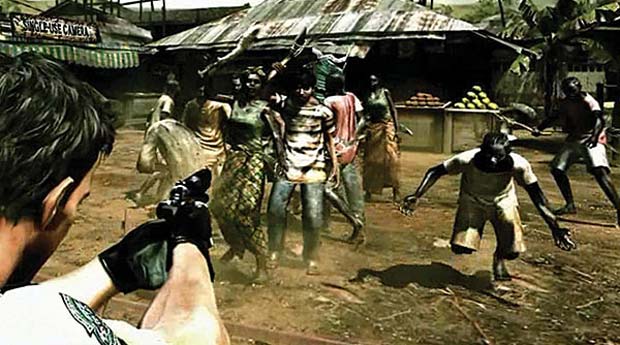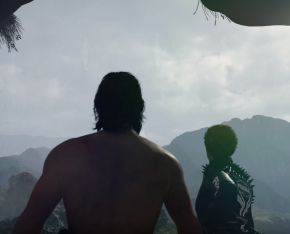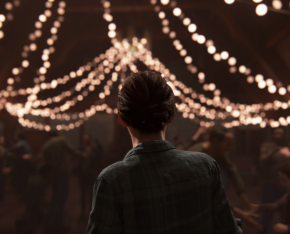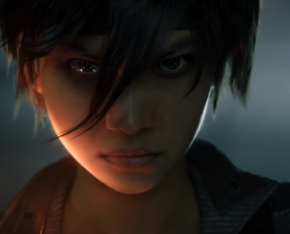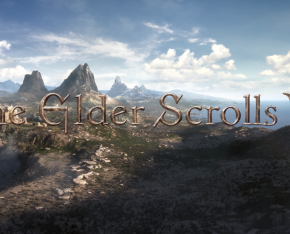By Bryan Smith on March 22, 2015 at 3:55pm
Don’t you just hate when one of your favorite gaming franchises puts out a game that seems to be part of the main line of entries but feels so different? I do. Not to say change is bad. It’s just when companies try to play it as "it’s the same series you love, but really it should just be something completely different."
Today, I’m introducing the phenomenon I call “The Capcom Stigma;” where a video game in a franchise should obviously be something completely different, even a new separate IP, but clings onto a familiar brand name just to play it safe. Just by glancing at it from the outside, this concept seems extremely ludicrous. However, looking at the development cycles of games show radical changes that may or break a game. We’re going to look at the ones where forcing characters that shouldn’t be in a particular game, hurt the game considerably.
"Kirby's Epic Yarn" & "Star Fox Adventures"
Let’s start off with a mild case with “Kirby’s Epic Yarn.” The “Kirby” series are usually known for the (generally) light-hearted nature of the pink marshmallow, Kirby, sucking enemies in and copying their powers. Since Kirby can fly and enemies aren’t excruciatingly relentless, these games are known for being relatively easy. There was usually a sense of punishment of taking health away when Kirby gets hit- just like most games.
“Kirby’s Epic Yarn” was a different beast, however. Kirby’s main objective was still to get to the end of the level, but he didn’t have to worry about taking too much damage if you only wanted to get to the end of the level. In that case, this game sounds all too easy. To justify the extreme easy, Kirby had to collect beads to unlock extra levels and furniture for the hub hotel area.
It should also be known that the deuteragonist of this particular game, Prince Fluff, was actually designed to be the main protagonist. Originally titled “Fluff of Yarn” (most likely a tentative title), this was an original game designed for Prince Fluff. Judging by the general style of the game, “Fluff of Yarn” would be marketed towards a younger audience. Nintendo, however, proposed that Kirby be put in the game instead, and thus we have “Kirby’s Epic Yarn.” While it was cute overall, beautiful to look at with nice music, the gameplay itself was very bare and there wasn’t any challenge to it. The critics enjoyed it, but looking back at it “Kirby’s Epic Yarn” really feels to be the black sheep of the series, as all future releases were traditional “Kirby” games with health bars and familiar play styles. The game may be a fun romp for a small amount of time; it’s just too easy for those not interested in collectibles and not a particularly fun “Kirby” game.
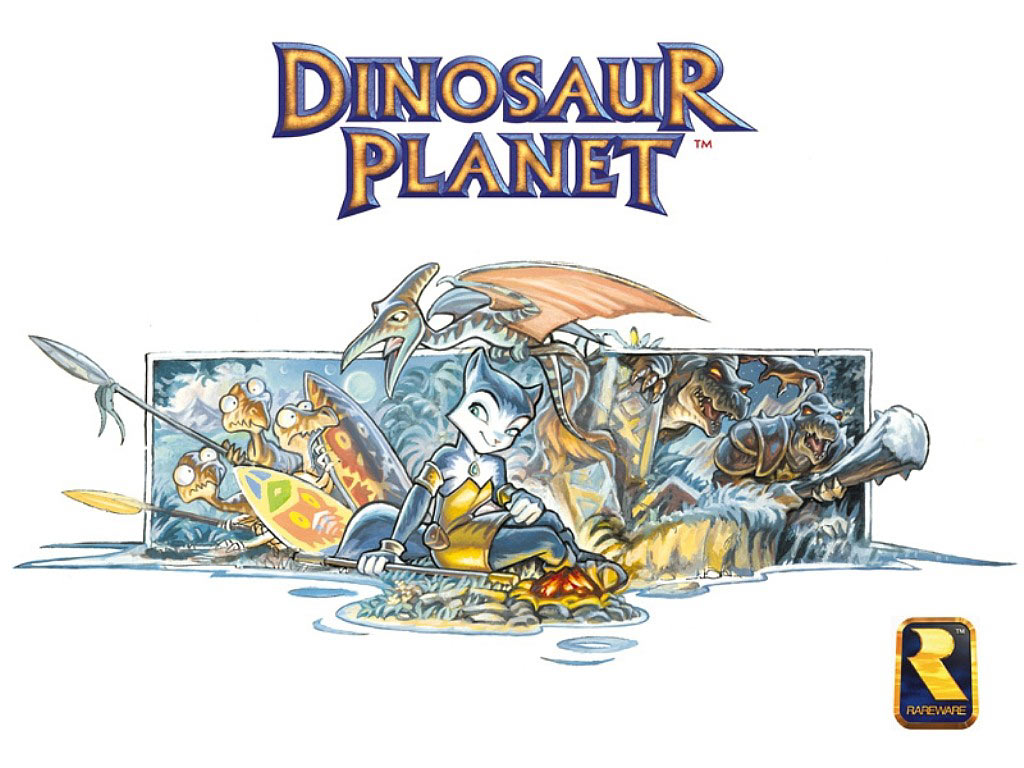
“Kirby’s Epic Yarn” wasn’t the only time Nintendo stepped in to alter a game’s direction. The same thing happened with Rare’s game “Dinosaur Planet.” Haven’t heard of “Dinosaur Planet” before? That’s because Nintendo proposed to Rare, with Shigeru Miyamoto spearheading the decision no less, that the anthropomorphic characters (those being Sabre and Krystal during the development) looked strikingly similar to Nintendo’s “Star Fox” characters. That’s when everything for “Dinosaur Planet” was retooled so that the “Star Fox” universe could fit in. Some development later, with “Dinosaur Planet” being completely dropped from the title, “Star Fox Adventures” released.
With another black sheep in the series, “Star Fox Adventures” had almost nothing to do with flying Arwings, which was what everyone wanted out of any game with “Star Fox” in the title. The gameplay actually mirrored “The Legend of Zelda” more than anything, which is probably where the “Adventure” part of the title comes from. Had Rare kept with “Dinosaur Planet,” it would have probably fared better. Just like that, though, “Star Fox Adventures” was Rare’s last major game under Nintendo’s wing.
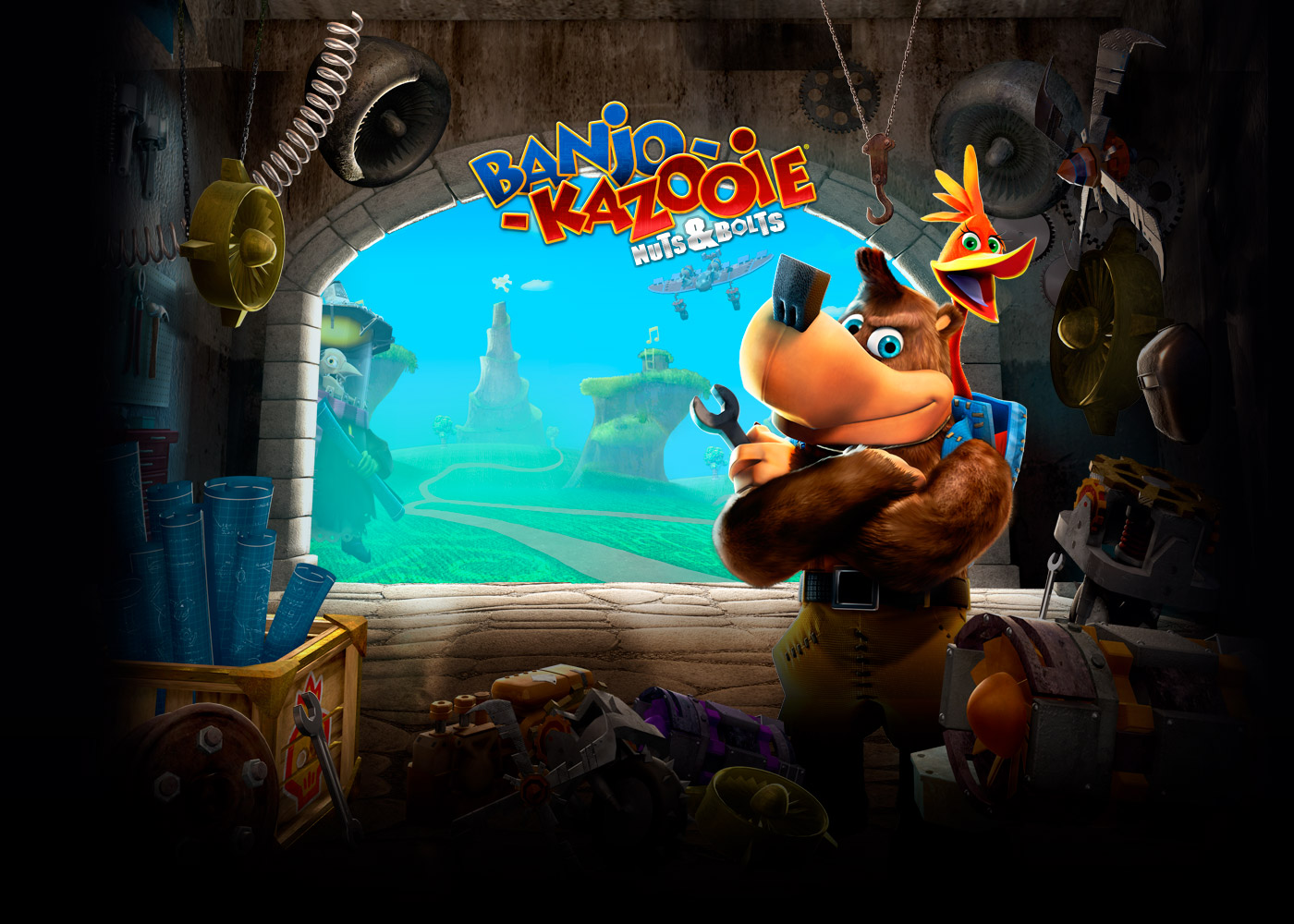
"Banjo-Kazooie: Nuts & Bolts"
Now here’s the other side of the coin that Rare had to deal with: Microsoft. Unlike “Star Fox Adventures,” however, the development for the next big “Banjo-Kazooie” game was lengthy and a bit… harsh to look at. If you are up to date with your tropes, this is where the term “development hell” comes into play (though not as bad as “Duke Nukem Forever” hell, don’t get me wrong). With the ending of “Banjo-Tooie,” Grunty (the villain) warns Banjo and Kazooie (and the players) that she’ll come back in “Banjo-Threeie,” this game’s supposed sequel. The concept was planted and probably would have seen a release… until Microsoft bought Rare in 2002. Everything not owned by Nintendo was moved to Microsoft, including “Perfect Dark,” “Conker,” and “Banjo-Kazooie.” Anything that was tailor-made for the Nintendo Gamecube was probably scrapped due to the different hardware. In fact, the only two Rare games that were made on the original Xbox were “Grabbed by the Ghoulies” and “Conker: Live & Reloaded” before the Xbox 360 came out.
During that time, several iterations of “Banjo-Kazooie” were considered, developed/tested, and eventually dropped for whatever internal reasons. Such versions include “Banjo-X,” most likely a traditional platformer for the original Xbox, a remake of the first game that had new twists, “Banjo-Kazoomie,” which was the first attempt at a racing game that (reportedly) might have been a side game for the series, and a variety of other attempts at a traditional platformer. Somewhere in that development hell, the racing elements got smashed together with the platformer bits, which then became “Banjo-Kazooie: Nuts & Bolts.”
There has been evidence that “Nuts & Bolts” would have been a traditional platformer, staying true to “Banjo-Kazooie’s” roots. There was an early trailer that showed off jiggies, note pieces, and tall hills for Banjo and Kazooie to traverse. Like I said before, however, development was pushed in a different direction- a direction a lot of people didn’t enjoy seeing.
“Banjo-Kazooie: Nuts & Bolts,” for those not aware of the game, is a racing game with some platformer elements. You build a car and drive around in it. That sounds all nice and good, but that’s not what most fans of “Banjo-Kazooie” want. They wanted the traditional platformer with collecting collectibles (which this game shamelessly and almost maliciously attacks the very notion of collecting said collectibles). As JonTron, famous YouTuber, had put it in his comedic video for the game, this shouldn’t have been a main “Banjo-Kazooie” game that many people wanted for years. They should have used a character that was more geared towards racing, such as Tiptup the Turtle or Timber the Tiger, who appeared more famously in “Diddy Kong Racing” than anything else. Instead, Microsoft used “Banjo-Kazooie” for easy recognition and probably of the awful development squandering of so many attempted “Banjo-Kazooie” games. I have a strong feeling the team gave up at some point and decided to just use whatever what was left and ran with it. Had they gone with someone else to represent “Banjo-Kazooie: Nuts & Bolts,” I don’t think the game would have such a bad reputation.
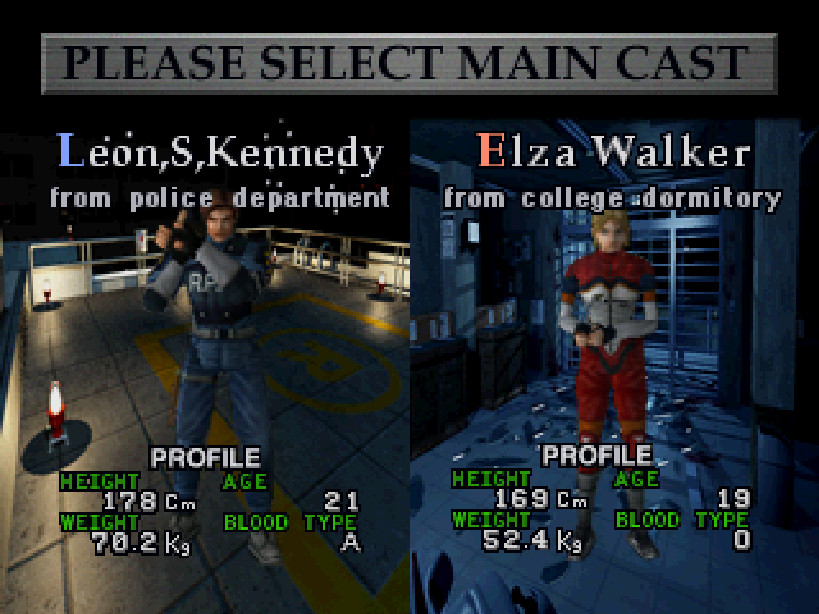
Capcom Doing It Right: "Resident Evil 4" and Prior
Here comes the guys who avoided this trend so well but fell victim to it so badly: Capcom. There was a lot of development shifting, back when “Resident Evil 4” was being made. Thanks to smart decision-making, other game franchises were given birth thanks to ideas not fitting into the “Resident Evil” style - those two franchises being “Onimusha” and “Devil May Cry.”
In fact, “Resident Evil” has had a strict sense of quality assurance for their games since before “Resident Evil 4.” The game “Resident Evil 2” had a different version called “Resident Evil 1.5,” which continued with Leon Kennedy as one of the leads, but Claire Redfield was nowhere to be seen. The first girl was Elza Walker, who had no connections to events prior. Other characters were either completely different or actually helped, instead of dying right away. There were more zombies intended to shuffle about and equippable gear to help nullify damage. However, it was scrapped because Shinij Mikami, the producer at the time, didn’t feel that the game was up to their standards. They wanted “Resident Evil 2” to be at the highest quality it could be, which meant “RE 1.5” had to be retooled completely. “Resident Evil 2” then came out, which was critically acclaimed and is often heralded as one of the best “Resident Evil” titles of all time.

“Resident Evil 4” went through a lot more changes than “Resident Evil 2” did. The first ideas pitched for the game wanted to make it be more of an action game where style was emphasized. Mikami, once again, stepped in and said that "wasn’t Resident Evil-like." Interestingly enough, “Onimusha: Warlords” drew inspiration of puzzle solving and fixed camera perspective from “Resident Evil.” A bug found in “Onimusha: Warlords,” along with the stylish ideas for the first pitch for “Resident Evil 4,” gave birth to the “Devil May Cry” series.
There have been several “versions” of what “Resident Evil 4” was supposed to be, with a similar rumored development title “Resident Evil 3.5.” A “fog version” was introduced where Leon went to an Umbrella castle-like facility and gets infected with a virus, but nothing else was particularly known. The “hook man version,” the one that we have some screenshots of, has Leon fighting inanimate objects suddenly coming to life. There were also hallucinations that made players not know what was coming at them. Oh, there was a hook man as well that would try and kill you. One last pitch had Leon back at a castle looking for Spencer, the mastermind behind Umbrella. These last pitch’s elements can be seen later in “Resident Evil 5” actually, but we’ll get to that game in a bit. Then comes the final version of “Resident Evil 4,” one of the most critically acclaimed games of “Resident Evil” history, of the sixth generations of gaming, and arguably of all time.
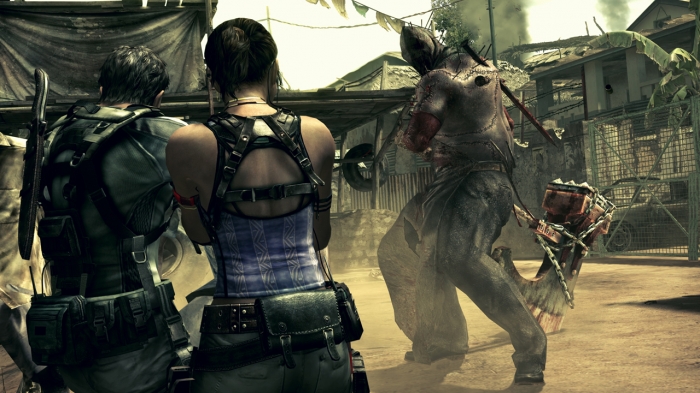
Capcom Doing It Wrong: "Resident Evil 5" and After
After the sixth generation of gaming, when we leap into the PlayStation 3, Xbox 360, and Wii, that’s when Capcom began to… fizzle out. When the Capcom Stigma really strikes hard. “Resident Evil 5” started development in which Chris Redfield, who was starting to look awfully muscular and less Boy Scout-ish, running about in an African town by himself. The heat really took a toll on him and, apparently, there were zombie-like enemies - even those like the Las Plagas from “RE4,” after him. However, the heat would become a significant part of the gameplay causing Chris to hallucinate, making the game more suspenseful and terrifying like the one build of “RE4.” Notably, Chris was alone, more capable of things not seen in the final product, and (on a minor note) less bulky than we know him nowadays. There were some… criticisms of the game early on.
Since this game took place in Africa, there were some buzz that “Resident Evil 5” was shaping up to be racist for having a ripped, military, white man running around shooting Africans. That sounds racist? That’s seems a little silly. Heck, some of the guys look white or tan in there. What kind of racism are people talking about-
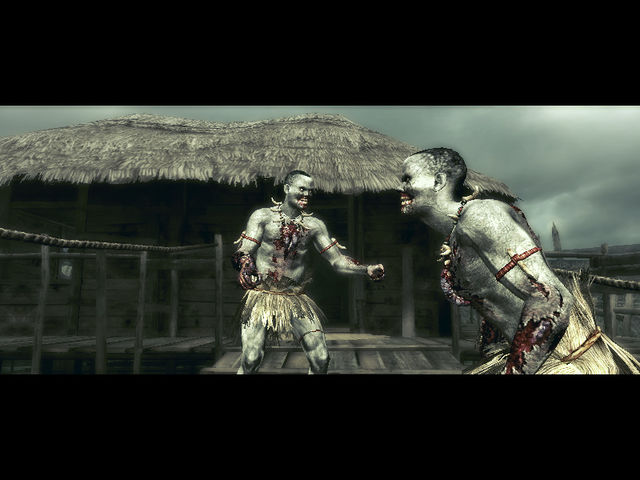
Oh. The wetland parts. The people were all shown as savages. On the outside, I can see this as concerning, but in context, they were all infected. Between the initial and later development, Sheva Alomar was added into cutscenes and gameplay suddenly. As I said before, there were cutscenes where Chris was alone that were in the final game but now we have Sheva there (with dialogue of minimal importance).
This is going to be a running theme, and my key point to this article, but the main game is perfectly fine. It just shouldn’t be a “Resident Evil” game. Now with co-op, there’s an extremely large focus on the action now rather than the horror horror. The hallucinations were scrapped all together. I think that Capcom, without Shinji Mikami, just didn’t know what to do with the horror aspects or they wanted to follow so close in other action games that sold so well. Remember, Mikami pretty much helped “Devil May Cry” exist because that kind of style shouldn’t be in “Resident Evil.”
Here’s some speculation on what I think happened with “Resident Evil 5’s” direction. Capcom might have wanted two different games: a traditional “Resident Evil” game that focused on scrapped elements from “Resident Evil 3.5” and a game that was action oriented, following on the heels of “Call of Duty 4” and “Halo 3.” Jun Takeuchi, the producer for the game, has stated that the movie “Black Hawk Down” was a major influence for the game at some point. I think that Capcom thought that they wanted something with action and since “Resident Evil” is a popular series, they could lump the two together and that’ll help with sales.
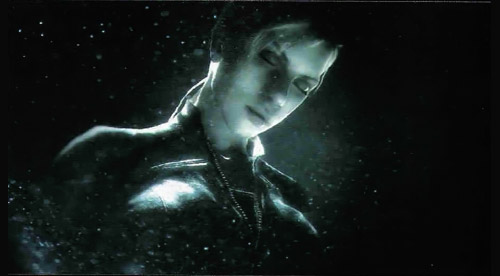
There were two parts of the game that people wanted to develop and make - one for the action, as seen in the first part of the game, and one part for the “Resident Evil” fans. This may be some extreme speculation now, but I believe that Sherry Birkin was supposed to be the girl that Chris saves, as seen in a teaser trailer, and Jill was the partner before Sheva was conceived, but things (maybe the racism controversy and the need for action/co-op) changed the plans. Sherry is blonde and it seems very silly/unnecessary to throw one of the most iconic and important characters of the “Resident Evil” into a relatively minor role. Don’t forget that the original plan for “RE4” was to send the player to an Umbrella castle with Spencer there, which so happens to be a plot point for “Resident Evil 5.” If Sherry was part of the plan before and she had a model, that model could have been spared and put into “Resident Evil 6,” where she is indeed a main playable character. That, however, is just one player and one theory on what happened during the development of “Resident Evil 5.”
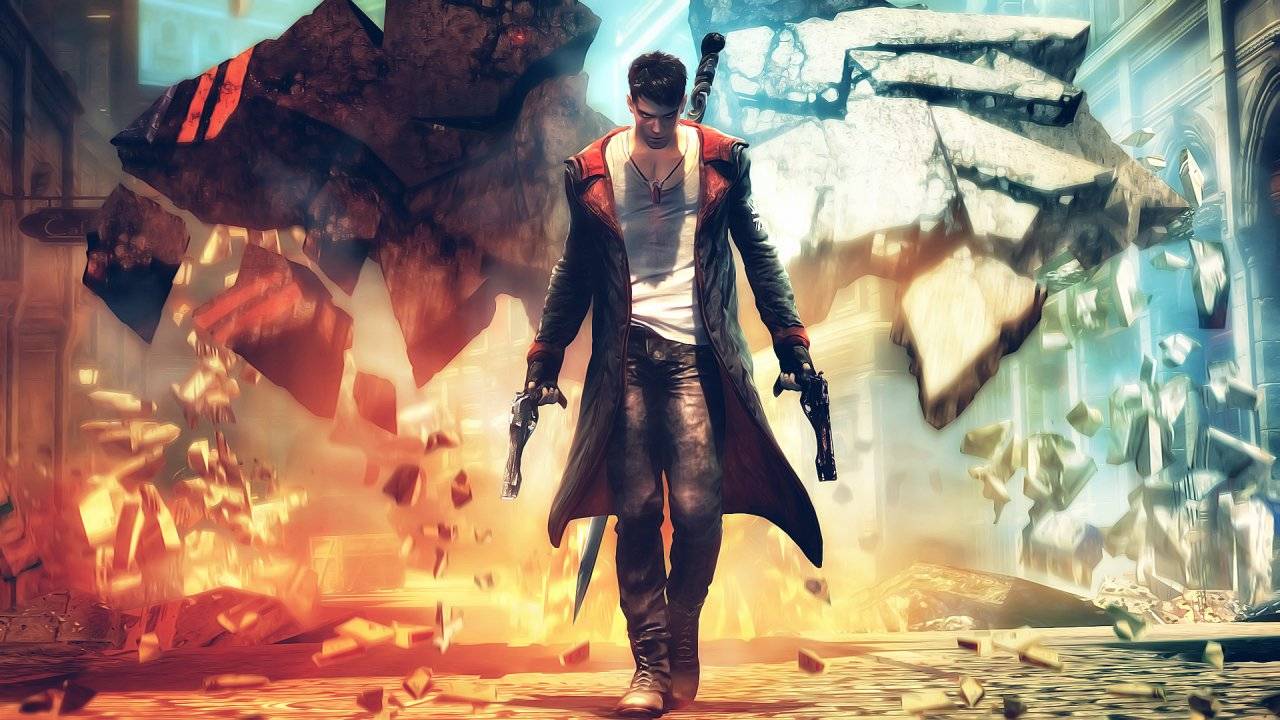
Capcom: "DmC: Devil May Cry"
Ah, the controversial one. A game that is so despised yet loved at the same time. “DmC: Devil May Cry.” Stupid name aside, this was a reboot/attempted prequel-changer/alternate storyline that wanted to be “edgier” and different than the original. By different, I mean extremely immature - i.e. the wig scene and writing done by a twelve-year-old who just discovered how to drop the f-bomb on repeat.
A while back, Capcom released a trailer for a new game developed by Ninja Theory, which got fans excited. Then came such a strong backlash of how un-“Devil May Cry” this new game was, which was also seen as a replacement for the campy-fun games. Dante looked like he had rolled through a Hot Topic and had black hair (for whatever reason). A fun nickname I gave this new Dante was “Twilight Fanfiction Dante” because he looked suspiciously like the director Tameem Antoniades (that, and he looks like he'd fit right in "Twilight").
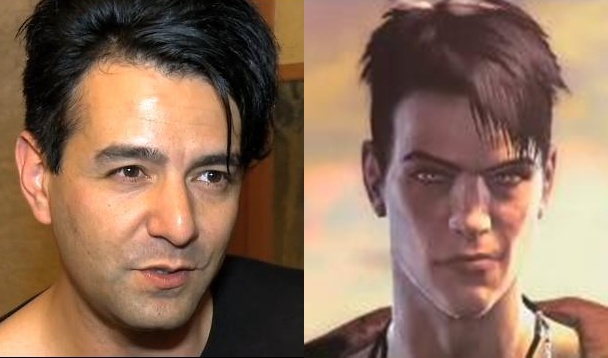
I feel bad for Ninja Theory since they wanted to be more true to the original, but Capcom was the one who pushed them in the direction of being so… different. Then again, Tameem should have kept his big mouth shut during the process. The only way to make a giant, raging fire worse is giving fuel to that fire. He had absolutely nothing nice to say to those who had complaints, whether they were the usual baseless insults or legitimate concerns. While Tameem was trying to say that he just wanted to make a game he wanted to make, he has gone on record to say, "Usually the worst creative crimes are made when you're trying to make a game for someone else - some perceived demographic that, in all likelihood, doesn't actually exist,” and “But, you know, what was cool 12 years ago – I think that was when the first game came out - isn’t cool any more. If Dante, dressed as he was, walked into any bar outside of Tokyo, he’d get laughed out.” There was complete malice all around for this particular game.
Then “DmC: Devil May Cry” came out. I think it’s safe to say Tameem himself did his best to make sure the game didn’t sell well, as the core gameplay was decent enough. Since more people came for the gameplay, they enjoyed it. However, often people ask if it’s a good “Devil May Cry” game. For some, it’s a hesitant yes. Others, myself included, no. People voted with their wallets and it is one of the least successful “Devil May Cry” games in the series, in terms of sales. It got to the point that Capcom had to decrease sale expectations to somewhere in the low millions and they weren’t going to outsource games to non-Japanese studios in fear of poor performance in sales. While the original series didn’t have Shakespearian writing (looking at you “light scene” from the first game), it had a nice, over-the-top fun that made me feel like I’m awesome for surfing on an enemy’s body across the floor like a rocket. With the tone, “DmC: Devil May Cry” should have been its own game. It wants to be unapologetically nasty and ugly, which would be a great concept… for a different game.
Take, for example, these two images. Both are of Dante dealing with a wound to his chest.
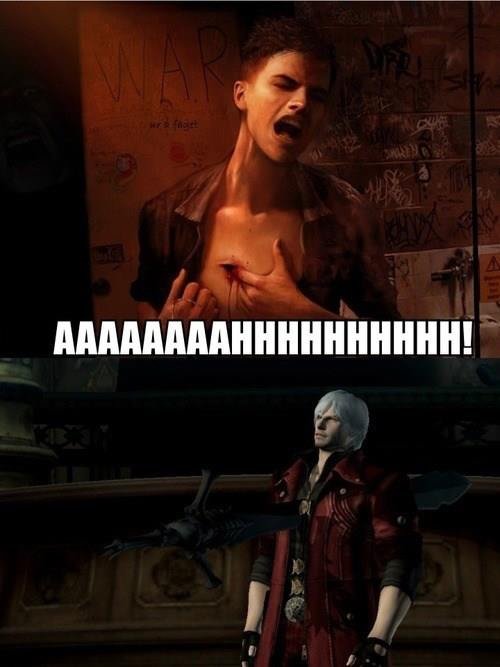
There’s a problem here with tone. One wants to be dark and show the ugly side of life, while the other just doesn’t care and just wants to have a good time. Similarly, think of how Darth Vader is shown. We all know that he is this ultimate embodiment of menace just by his presence. We don’t need to see what he was as a kid or good guy because we get to see that at the end of “Star Wars: Return of the Jedi.” The same thing applies here for Dante. We don’t need to see how fragile and un-badass he is because that’s not what we want. Even then, Old Vergil in “Devil May Cry 3” helped paint a picture of what the two were like when they weren’t epic forces of nature by simply being there. Another way to see it would be like “Hey, I want to see what Duke Nukem was before he was this awesome guy who could kick an alien army’s ass because he was all out of gum.” There are just some characters that don’t need to be explored fully.
As I have stated with most of these games, they would have been perfectly fine… had they been something else. When a person wants to play a game, they’ll play that game. Player A wants to play a sequel to “Star Fox 64” or something in the same genre of spaceship shooters. Giving Player A something that isn’t “Star Fox” at its core but something else will make her/him go, “Thanks, but where’s the Arwing shooting? I want that, not ‘The Legend of Zelda’ with Fox McCloud in it. ‘Star Fox’ has always been spaceships, right?” The same thing will happen if Player A wants “Resident Evil” but gets “Black Hawk Down” the game instead.
If a good idea presents itself that hasn’t been done before, it should be experimented with as something new. Sure, it’s a risk, but risks can be more rewarding. Remember; if someone wants to play “Call of Duty,” he/she will buy the next “Call of Duty,” not “Resident Evil” trying to be “Call of Duty.”
Did You Know Gaming?: Banjo-Kazooie JonTron
